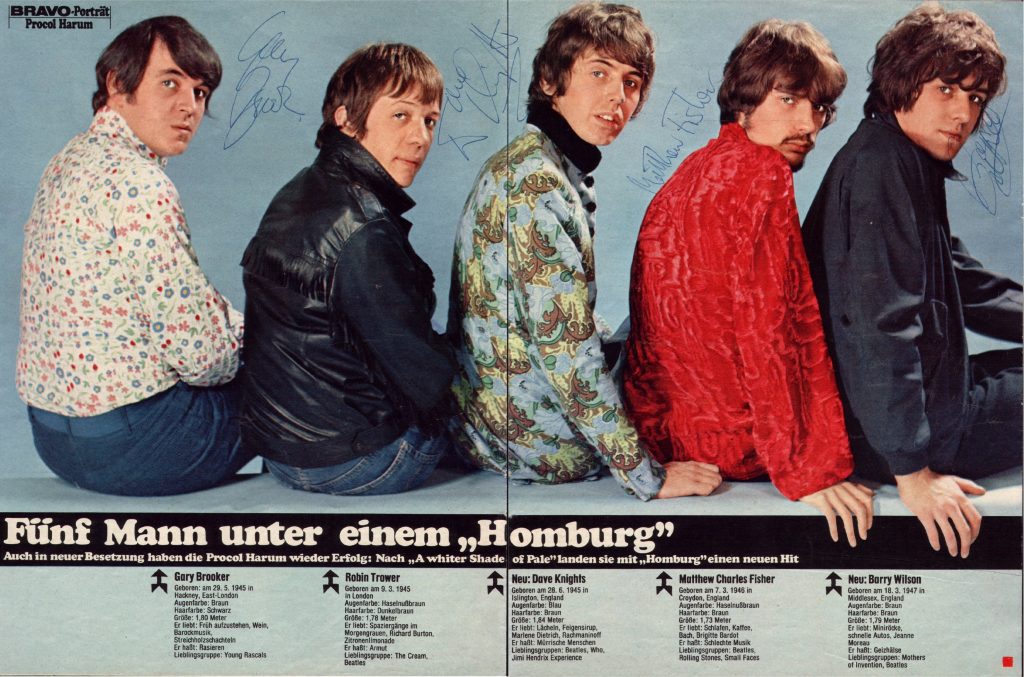
A Gambler’s Lament: The Shadowed Elegance of Procol Harum’s “Homburg”
A darkly elegant waltz, steeped in cryptic imagery and a sense of melancholic grandeur, Procol Harum’s “Homburg” is a sonic portrait of shadowed sophistication, a song that reached number 34 on the US Billboard Hot 100 and number 6 on the UK Singles Chart in 1967. It’s not merely a song; it’s a miniature drama, a glimpse into a world of hidden emotions and unspoken truths, framed by a hauntingly beautiful melody.
For those of us who recall the late 60s, “Homburg” arrived as a sophisticated counterpoint to the more overt psychedelia of the era. It was a testament to Procol Harum’s ability to craft music that was both intellectually stimulating and emotionally resonant. Following the seismic impact of “A Whiter Shade of Pale,” this track solidified their reputation as purveyors of a unique and deeply evocative sound.
The story behind “Homburg” is shrouded in the same enigmatic aura that permeates the song itself. Keith Reid, the band’s lyricist, once again conjured a world of evocative imagery, drawing inspiration from a sense of social unease and the subtle power dynamics that play out beneath the surface of polite society. The song’s title, a reference to the stylish felt hat, serves as a metaphor for the carefully constructed facades we present to the world, concealing our true emotions and intentions. Gary Brooker’s vocals, imbued with a sense of weary resignation, lend the lyrics a profound emotional weight, transforming the song into a melancholic reflection on the masks we wear.
The song’s meaning, while open to interpretation, seems to explore themes of social alienation, emotional detachment, and the subtle power struggles that define human relationships. The waltz-like rhythm, coupled with the song’s baroque instrumentation, creates a sense of formal elegance, while the cryptic lyrics hint at a deeper, more unsettling undercurrent. The interplay between the classical influences and the band’s rock foundation creates a sonic tapestry that is both beautiful and unsettling, a reflection of the complex emotions that lie beneath the surface of human interaction.
For many, “Homburg” became a touchstone, a reminder of the power of music to evoke a sense of mystery and emotional depth. It was a song that resonated with the introspective spirit of the era, a yearning for authenticity and a desire to see beyond the carefully constructed facades that surround us. The song’s enduring appeal lies in its enigmatic beauty, its haunting melody, and its exploration of universal themes that continue to resonate today.
As we listen to “Homburg” today, it evokes a sense of nostalgia, a longing for a time when music dared to be both sophisticated and deeply emotional. It’s a reminder of the power of art to create a shared experience, to transport us beyond the mundane and into the realm of introspection. The song’s shadowed elegance and timeless themes continue to captivate audiences, a testament to its enduring power and its ability to capture the essence of human complexity and the melancholic beauty of unspoken truths. It’s a gambler’s lament, a darkly elegant waltz, forever echoing in the corridors of our memories.